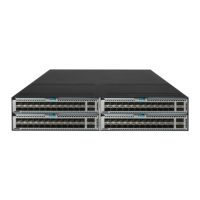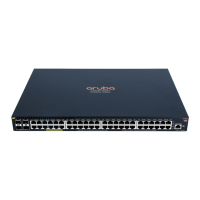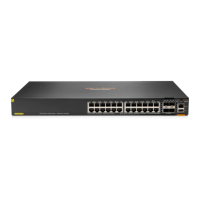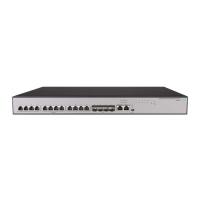348
Figure 88 Network diagram
Table 31 Interface and IP address assignment
Device Interface IP address Device Interface IP address
CE 1 Vlan-int11 100::1/64 CE 2 Vlan-int11 120::1/64
Vlan-int13 20::1/64 Vlan-int12 30::2/64
PE 1 Loop0 1.1.1.9/32 PE 2 Loop0 2.2.2.9/32
Loop1 3::3/128 Loop1 5::5/128
Vlan-int11 100::2/64 Vlan-int11 120::2/64
Vlan-int12 10.1.1.1/24 Vlan-int12 10.1.1.2/24
Switch A Vlan-int11 30::1/64
Vlan-int12 20::2/64
547BConfiguration procedure
1. Configure OSPFv3 on the customer networks:
# Configure conventional OSPFv3 on CE 1, Switch A, and CE 2 to advertise subnet addresses
of the interfaces (see
849HTable 31). (Details not shown.)
# Set the cost value to 2 for both the link between CE 1 and Switch A, and the link between CE
2 and Switch A. (Details not shown.)
# Execute the display ipv6 routing-table command to verify that CE 1 and CE 2 have learned
the route to each other. (Details not shown.)
2. Configure IPv6 MPLS L3VPN on the backbone:
# Configure basic MPLS and MPLS LDP on PE 1 to establish LDP LSPs.
<PE1> system-view
[PE1] interface loopback 0
[PE1-LoopBack0] ip address 1.1.1.9 32
[PE1-LoopBack0] quit
[PE1] mpls lsr-id 1.1.1.9
[PE1] mpls ldp
[PE1-ldp] quit
[PE1] interface vlan-interface 12
[PE1-Vlan-interface12] ip address 10.1.1.1 24
Vlan-int12
Loop0
Loop0
Sham-link
CE 1 Switch A CE 2
PE 2PE 1
Loop1 Loop1
OSPFv3 Area 1
Backdoor link
Vlan-int12
Vlan-int11
Vlan-int11
Vlan-int13
Vlan-int11
Vlan-int11
Vlan-int12 Vlan-int12
Vlan-int13

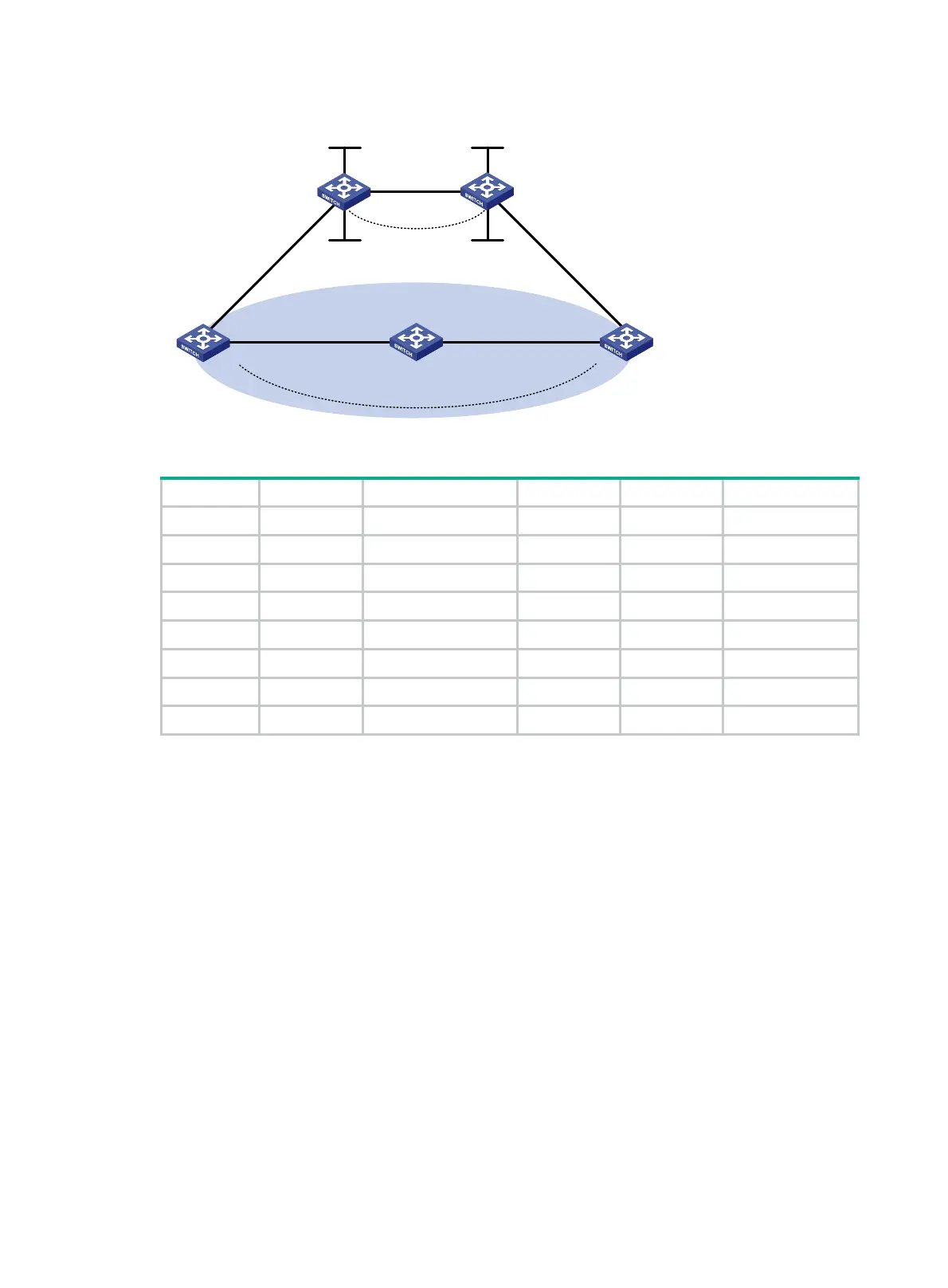